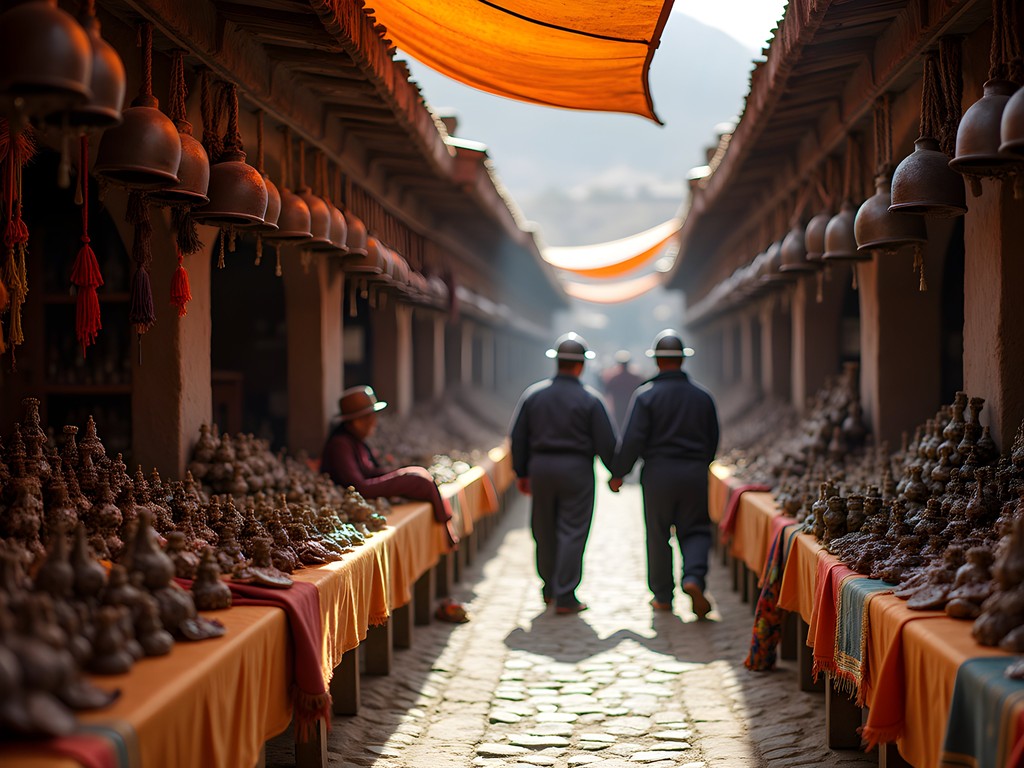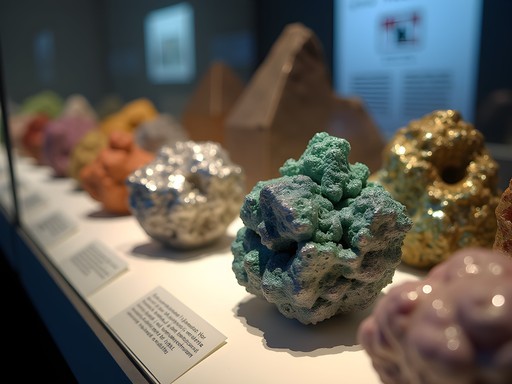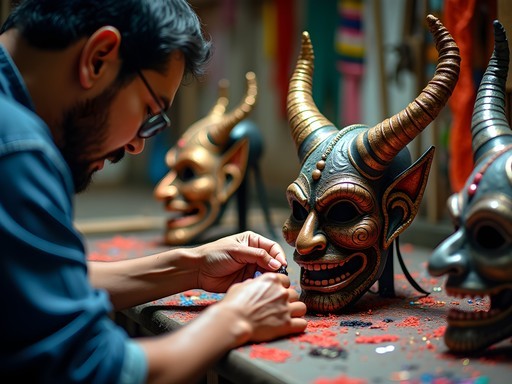Disclosure: This article contains affiliate links. We may earn a commission from purchases at no extra cost to you, which helps our travel content.
When most fashion buyers plan work trips, they're jetting off to Milan or Paris. But when I finally scored some vacation time between sourcing seasons, I knew I wanted something completely different from the polished showrooms and pristine boutiques that fill my work calendar. That's how I found myself in Oruro, Bolivia – a city where silver and tin once flowed like water, creating an industrial heritage that shaped an entire nation. What started as a curious Google search about South American mining towns turned into one of the most eye-opening weekend adventures I've had. Oruro might not have the glamour of fashion capitals, but its gritty authenticity and layered history offer something far more valuable than any luxury shopping district: a genuine glimpse into how industry shapes culture, architecture, and identity. Ready to trade designer labels for miners' helmets? Let's dig into Oruro's fascinating underground world.
Understanding Oruro's Silver Legacy
Oruro sits at a breathtaking 12,000+ feet above sea level in the Bolivian highlands, a city literally built on silver and tin. Before stepping foot in any mine, I spent my first morning at the Museo Mineralógico to get proper context. The museum houses an impressive collection of minerals that immediately made me think about the raw materials behind the luxury goods I source for work—there's something humbling about seeing the geological origins of wealth.
What struck me most was learning how Oruro's mining boom in the late 19th century transformed this high-altitude outpost into Bolivia's industrial heartland. The exhibits feature vintage mining equipment that looks almost steampunk in design—brass gauges, heavy iron machinery, and tools that required serious muscle to operate.
The museum guide explained how European mining technologies were adapted to work in the extreme Andean environment, creating unique engineering solutions. I'm used to studying production techniques for textiles and accessories, but seeing these industrial innovations gave me a whole new appreciation for human ingenuity in challenging conditions.
Before heading out, I picked up a detailed map of the city's mining sites from the gift shop. If you're planning your own visit, I'd recommend grabbing the travel journal I brought along—its acid-free pages were perfect for pressing small mineral samples the museum lets visitors take home (completely legally, I promise!).

💡 Pro Tips
- Visit the Museo Mineralógico first to understand the context before touring any actual mines
- Ask for an English-speaking guide at the museum—they're available but you need to request them specifically
- The museum is surprisingly cold inside, so bring an extra layer even if it's warm outside
Descending into the San José Mine
Nothing could have prepared me for the San José Mine tour. After squeezing into borrowed overalls and a hard hat that had definitely seen better days, our group descended into what was once one of Bolivia's most productive silver mines. The contrast between this experience and my usual routine of evaluating luxury textiles in perfectly-lit showrooms couldn't have been more stark.
The mine entrance feels like a portal to another dimension—the temperature drops, the air thickens with dust, and the daylight quickly disappears. Our guide, Mauricio, was a third-generation miner who worked these tunnels for over two decades before becoming a tour guide. His calloused hands and matter-of-fact descriptions of daily life underground were worth more than any guidebook.
As we ventured deeper, stooping through narrow passages barely five feet tall, Mauricio explained how miners would work 12-hour shifts in these claustrophobic conditions. The tunnels occasionally opened into larger chambers where we could see the veins of minerals streaking through the rock walls—silver, tin, and zinc deposits that once made this region wealthy.
The most unsettling part was visiting the shrine to El Tío—a devil-like figure miners believe rules the underground. Cigarettes, coca leaves, and alcohol offerings surrounded the horned statue, a testament to how spiritual beliefs and industrial labor intertwine here. Mauricio explained that miners make offerings to El Tío for protection and good fortune—a practice that continues even in modern operations.
If you're planning this adventure, invest in a good headlamp. The mine-provided lights are weak, and having my own powerful beam made a huge difference in both safety and being able to appreciate the intricate mineral formations along the tunnel walls.

💡 Pro Tips
- Wear closed-toe shoes you don't mind getting dirty—the mine floors are muddy and uneven
- Bring small bills to purchase gifts for the miners (coca leaves, cigarettes, or drinks) as a sign of respect
- If you're claustrophobic, let your guide know—there are wider sections of the mine that can be visited instead
The Socavón Chapel: Where Faith Meets Industry
After the underground intensity of San José Mine, the Socavón Chapel offered a fascinating cultural counterpoint. Perched on a hillside overlooking the city, this 18th-century church was built directly over a mine entrance—a physical manifestation of how Catholicism and indigenous beliefs merged in Bolivia's mining communities.
The chapel's modest exterior belies its cultural significance. Inside, the altar features the Virgin of the Mineshaft (Virgen del Socavón), the patroness of miners who's believed to protect workers underground. What fascinated me was how this sacred space represents the dual spiritual world of Oruro's miners—above ground, they pray to Catholic saints; below ground, they make offerings to El Tío.
During my visit, an elderly caretaker noticed my interest in the religious artifacts and invited me to see a small museum attached to the chapel. The collection included ex-votos—small paintings and objects left by miners and their families giving thanks for protection or miracles. These simple, heartfelt offerings reminded me of the human stories behind industrial statistics.
The chapel's location provides one of the best panoramic views of Oruro. From this vantage point, you can trace the city's development—from colonial-era buildings in the center to more modern neighborhoods expanding outward. It's like seeing a physical timeline of how mining wealth shaped urban development.
I spent about an hour sketching the cityscape in my travel sketchbook, trying to capture how the mountain light played across the terracotta rooftops. Even if you're not artistically inclined, I'd recommend bringing something to document your impressions—there's something about this place that inspires reflection.

💡 Pro Tips
- Visit late afternoon when the light makes the city views particularly photogenic
- Bring a small donation for the chapel's maintenance—tourism helps preserve this historical site
- Look for the small plaques explaining the symbolism in the religious art—they provide fascinating cultural context
The Miners' Market: Industrial Culture Meets Daily Life
In my day job as a retail buyer, I spend hours analyzing consumer trends and product displays. So naturally, I was drawn to Oruro's Miners' Market—but this was about as far from a curated boutique experience as you can get. Located in the heart of the city, this bustling marketplace is where mining culture manifests in everyday commerce.
Stalls overflow with mining equipment—from practical tools and safety gear to the more surprising ritual items. One vendor specialized exclusively in offerings for El Tío—cigarettes, alcohol, and coca leaves carefully arranged in ceremonial bundles. Another sold miniature mining figurines depicting workers in various roles. I picked up several of these as souvenirs—they now sit on my desk as a reminder of labor realities behind global supply chains.
What surprised me most was the fashion element. Mining in Oruro has developed its own distinct workwear aesthetic—heavy-duty overalls reinforced with leather patches, specialized boots designed for the slippery mine floors, and bandanas in bright colors that help workers identify each other in the dim underground light. As someone who regularly evaluates fabrics and construction techniques, I was impressed by the functionality built into every garment.
The market also offers a window into miners' daily lives through food stalls serving traditional meals that workers eat before or after shifts. I tried the api con pastel—a thick, purple corn drink served with fried pastry—that provides the quick energy miners need for their physically demanding work.
If you're interested in photography, bring a camera lens filter for the challenging lighting conditions. The market's narrow aisles alternate between bright sunlight and deep shadows, and having the right equipment helps capture the vibrant details without blowing out highlights.

💡 Pro Tips
- Visit mid-morning when the market is active but not overwhelmingly crowded
- Ask permission before photographing vendors or their goods—most are friendly if you show respect
- Try the miners' lunch special at one of the food stalls—it's incredibly filling and costs less than $3
Carnival Connections: Mining Heritage Through Celebration
While my weekend visit didn't coincide with Oruro's famous Carnival (usually held in February/March), the event's presence is felt year-round through museum exhibits, rehearsal spaces, and craft workshops scattered throughout the city. UNESCO recognized Oruro's Carnival as a Masterpiece of the Oral and Intangible Heritage of Humanity, and after spending time here, I understand why.
What fascinates me is how deeply the Carnival's imagery is connected to mining heritage. The famous Diablada (Devil's Dance) directly references El Tío from the mines, transforming the underground devil figure into an elaborate costume featuring horned masks, sequined capes, and intricate embroidery that would make any fashion designer envious.
I visited a mask maker's workshop where artisans were crafting the elaborate devil masks used in performances. The level of craftsmanship was extraordinary—hand-formed metal details, intricate paintwork, and embellishments that require weeks of painstaking labor. As someone who regularly evaluates manufacturing quality for retail products, I was blown away by the technical skill displayed in these ceremonial items.
The Museo del Folklore provides context for how mining and carnival traditions intertwine. Displays show how miners historically used the celebrations as a form of resistance and cultural expression during colonial times, adapting Catholic traditions to incorporate indigenous beliefs and mining symbolism.
Even if you can't visit during Carnival season, you can often catch weekend rehearsals where dance groups practice for the next year's performances. I stumbled upon one such rehearsal in a school courtyard—the thundering percussion and hypnotic movements offered a small taste of the full celebration's energy.
I documented these cultural connections in my travel notebook, which has become my go-to for capturing observations that might inspire future retail trends. The color combinations and pattern work in the carnival costumes are already influencing my buying decisions for next season's accessories.

💡 Pro Tips
- Visit the Museo del Folklore even if you're not in town for Carnival—it provides essential cultural context
- Ask at your accommodation about potential rehearsals happening during your stay
- Support local artisans by purchasing small carnival-inspired crafts rather than mass-produced souvenirs
Final Thoughts
As I boarded my flight back to Santa Ana, my hands still stained with traces of mineral dust from the San José Mine, I couldn't help but reflect on how Oruro had transformed my understanding of industrial heritage. In my world of retail buying, we often discuss product origins in abstract terms—rarely do we confront the human labor and cultural impact of extraction industries so directly. Oruro isn't just a former mining boomtown; it's a living museum where industry, spirituality, and cultural expression have created something uniquely Bolivian. Whether you're descending into the tunnels where workers still extract precious metals or watching carnival dancers transform mining mythology into artistic expression, Oruro offers something few destinations can: an authentic window into how industrial heritage shapes human experience. If you're a student of history, anthropology, or just someone seeking to understand the complex relationships between labor, culture, and identity, put this unassuming Bolivian city on your must-visit list. The silver might not flow as freely as it once did, but Oruro's cultural wealth continues to shine brightly.
✨ Key Takeaways
- Oruro offers an accessible, budget-friendly window into South America's industrial heritage that's perfect for a weekend trip
- The combination of active mining sites, religious traditions, and cultural celebrations provides a multidimensional understanding of mining's impact
- Even on a student budget, you can experience everything from underground mine tours to cultural museums without breaking the bank
📋 Practical Information
Best Time to Visit
Year-round, though February/March offers the additional experience of Carnival celebrations
Budget Estimate
$30-50 per day including accommodations, food, and activities
Recommended Duration
2-3 days
Difficulty Level
Moderate Due To High Altitude And Physical Nature Of Mine Tours
















Comments
starguy20
Great post! Is it safe to bring a good camera into the mines or too dusty/risky?
Jose McDonald
I brought my camera protector which helped with the dust, but honestly a good phone camera works fine too. Just keep it in a secure pocket when climbing!
Frank Garcia
Jose, this is exactly the kind of off-the-beaten-path destination I love reading about. I backpacked through Bolivia last year but completely missed Oruro, focusing instead on the salt flats. The San José Mine sounds fascinating - how difficult was it physically to navigate the tunnels? I'm planning another South America trip next year and might add this to my itinerary. Did you find any Spanish language skills essential for this particular experience?
Jose McDonald
Hey Frank! The mine tunnels aren't too physically demanding, but you'll need to be comfortable in tight spaces. Basic Spanish definitely helps, especially for interacting with the miners, though some guides speak English. Let me know if you decide to go!
Frank Garcia
Thanks for the info, Jose! Tight spaces don't bother me so that's good to hear. My Spanish is decent so sounds like I'll manage fine. Adding it to my list!
adventuremaster6616
Wow, what a unique vacation choice! Never would've thought about visiting mines in Bolivia but now I'm intrigued!
blueking
Love this post! Been to Bolivia twice but never made it to Oruro. Definitely on the list for next time!
nomadrider
This is so different from the usual travel blogs! Adding Oruro to my Bolivia itinerary now. Anyone know how to get there from La Paz?
blueking
There are regular buses from La Paz to Oruro - about 3-4 hours. Super cheap and the views are amazing! Just bring warm clothes, it gets cold.
Hunter Thompson
YESSS! Finally someone writing about Oruro beyond just the carnival! I backpacked through Bolivia last year and the mining towns were the most REAL experiences I had. The miners' market you mentioned is INCREDIBLE - I bought this weird llama fetus thing that the locals use for offerings (my mum wasn't impressed when I brought it home lol). Did you try the miners' lunch? That hearty soup they make with like a million potatoes? Absolute lifesaver at that altitude! Planning to go back next year and spend more time in these less touristy spots.
citynomad
I visited the mines in Potosí which has a similar setup. The conditions these miners work in are eye-opening. Our guide was a former miner who explained how they chew coca leaves to suppress hunger and deal with the altitude. Did you bring gifts for the miners? We took coca leaves, cigarettes and some drinks which they really appreciated. The whole experience made me think differently about where minerals come from for our everyday products.
Hunter Thompson
I had the same experience in Potosí! It's humbling to see people working in those conditions. Did you see the Tío statues? Absolutely wild how they pour alcohol and leave cigarettes for them.
citynomad
Yes! The Tío statues were fascinating. Our guide explained the whole belief system around them. Kind of surreal to see ancient spirituality mixed with industrial work.
photophotographer8622
Great shots inside the mine! What camera settings did you use in such low light?
Jose McDonald
Thanks! I used my mirrorless camera with a fast prime lens at f/1.8, high ISO (3200-6400), and brought a small LED light panel. The dusty environment is tough on gear though!
Jean Wells
Your post brings back memories of my visit to Oruro last year. The industrial heritage there is so underappreciated compared to the salt flats that everyone rushes to see. I found the contrast between the harsh working conditions and the profound spirituality particularly moving. Did you notice how the miners still practice pre-Columbian rituals alongside Catholic ones? The offerings to El Tío (the underground devil figure) were fascinating from an anthropological perspective. I spent three days documenting the miners' relationship with these dual belief systems. The resilience of these communities deserves more attention in travel literature.
wavehero
How safe was it going into the San José Mine? I've heard mixed things about mine tours in South America and I'm a bit claustrophobic.
Jose McDonald
The tour is definitely not for everyone! They provide basic safety equipment, but the tunnels can be narrow and hot. If you're claustrophobic, I'd suggest just visiting the Socavón Chapel instead - you still get the mining culture without going underground.
wavehero
Thanks for the honest feedback! The chapel sounds like a better option for me.
Venture X
Premium card with 2X miles, $300 travel credit, Priority Pass